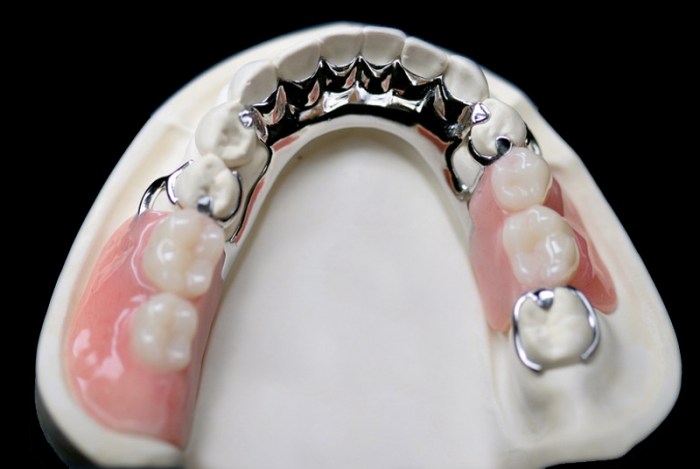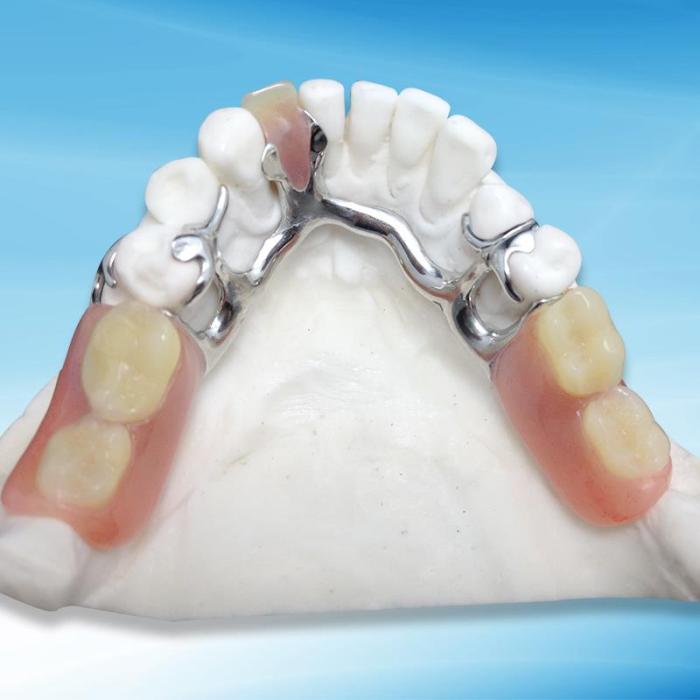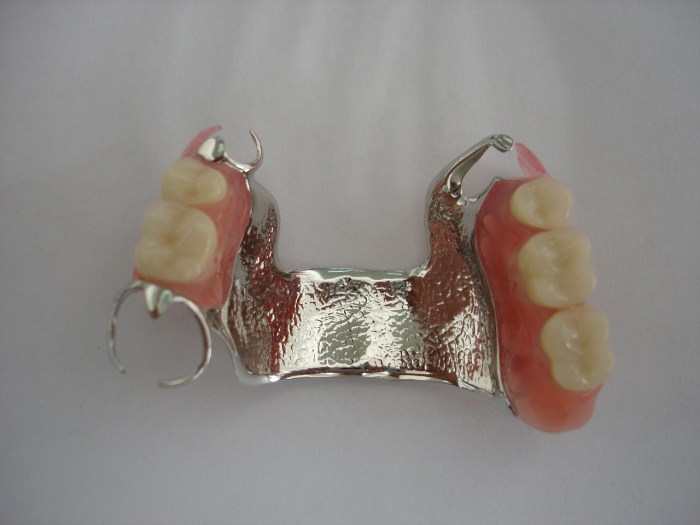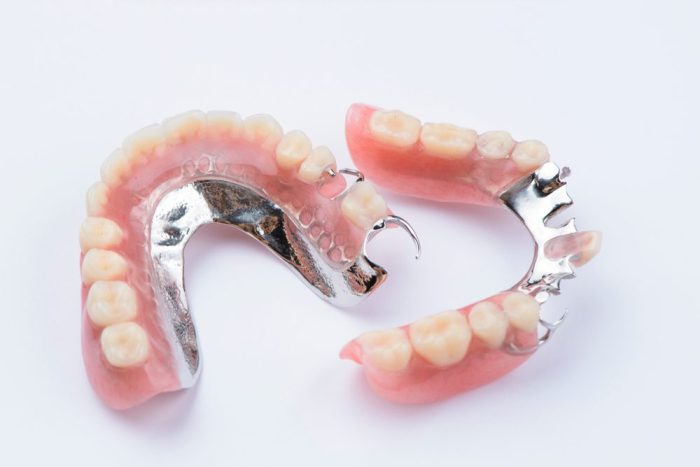The metal skeleton of a removable partial denture is a crucial component that provides support and retention to the prosthesis. It is designed to distribute occlusal forces evenly and prevent excessive stress on the remaining natural teeth. This comprehensive guide explores the purpose, design considerations, fabrication process, clinical procedures, maintenance, advantages, and disadvantages of metal skeleton removable partial dentures.
Introduction to Metal Skeleton Removable Partial Denture

Metal skeleton removable partial dentures (RPDs) are dental prosthetics that replace missing teeth and restore oral function and aesthetics. They consist of a metal framework that supports acrylic or composite teeth, and are designed to be removable for cleaning and maintenance.
Metal skeleton RPDs offer several benefits over other types of removable partial dentures. They are strong and durable, providing excellent support for the remaining teeth and the prosthesis itself. The metal framework is also less bulky than other materials, making it more comfortable to wear and less likely to cause irritation.
Materials Used in Metal Skeleton Frameworks
The metal framework of a metal skeleton RPD is typically made from a cobalt-chromium alloy. This alloy is strong, corrosion-resistant, and biocompatible, making it an ideal material for dental prosthetics.
Other materials that may be used in metal skeleton frameworks include titanium and gold alloys. Titanium is a lightweight and strong metal that is also highly biocompatible. Gold alloys are more expensive than cobalt-chromium alloys, but they offer excellent corrosion resistance and aesthetics.
Design Considerations

The design of a metal skeleton framework is influenced by several factors, including:
Patient Anatomy
The patient’s anatomy, including the shape and size of the jaws, the remaining teeth, and the soft tissues, will all influence the design of the metal skeleton framework.
Occlusal Relationships
The occlusal relationships between the remaining teeth and the opposing teeth will also influence the design of the metal skeleton framework. The framework must be designed to allow for proper occlusion and prevent excessive forces from being applied to the remaining teeth.
Esthetic Requirements
The esthetic requirements of the patient will also influence the design of the metal skeleton framework. The framework should be designed to be as inconspicuous as possible, while still providing adequate support for the prosthesis.
Fabrication Process

The fabrication of a metal skeleton framework involves several steps:
Creating a Master Cast
The first step is to create a master cast of the patient’s teeth and jaws. This cast will be used to design and fabricate the metal skeleton framework.
Designing and Waxing the Framework
Once the master cast has been created, the dental technician will design the metal skeleton framework. The framework is typically designed using a wax pattern, which is then invested in a mold and cast in metal.
Casting and Finishing the Framework
Once the framework has been cast, it is finished and polished. The framework is then fitted to the patient’s mouth and any necessary adjustments are made.
Clinical Procedures
The clinical procedures associated with metal skeleton RPDs include:
Impression Taking
The first step is to take impressions of the patient’s teeth and jaws. These impressions will be used to create the master cast.
Jaw Registration, Metal skeleton of a removable partial denture
Once the impressions have been taken, the patient’s jaw registration is recorded. This information will be used to determine the proper occlusion for the prosthesis.
Try-in and Insertion
Once the metal skeleton framework has been fabricated, it is tried in the patient’s mouth to ensure proper fit and occlusion. The framework is then inserted and any necessary adjustments are made.
Maintenance and Care: Metal Skeleton Of A Removable Partial Denture

Proper maintenance and care of metal skeleton RPDs is essential to ensure their longevity and effectiveness.
Cleaning and Disinfection
Metal skeleton RPDs should be cleaned and disinfected daily. The prosthesis should be brushed with a soft-bristled toothbrush and a mild soap or denture cleaner. The prosthesis should also be soaked in a denture cleaning solution overnight.
Regular Checkups and Adjustments
Regular checkups and adjustments are also important to ensure the proper fit and function of metal skeleton RPDs. The patient should see their dentist every 6 months to have the prosthesis checked and adjusted as necessary.
Advantages and Disadvantages
Metal skeleton RPDs offer several advantages over other types of removable partial dentures. They are strong and durable, providing excellent support for the remaining teeth and the prosthesis itself. The metal framework is also less bulky than other materials, making it more comfortable to wear and less likely to cause irritation.
However, metal skeleton RPDs also have some disadvantages. They are more expensive than other types of removable partial dentures, and they can be more difficult to adjust and repair.
| Advantages | Disadvantages |
|---|---|
| Strong and durable | More expensive |
| Less bulky | More difficult to adjust and repair |
| Comfortable to wear | |
| Less likely to cause irritation |
FAQ Explained
What are the benefits of metal skeleton removable partial dentures?
Metal skeleton removable partial dentures offer several benefits, including improved stability, reduced bulk, enhanced aesthetics, and increased durability compared to other types of removable partial dentures.
How is a metal skeleton framework designed?
The design of a metal skeleton framework considers factors such as patient anatomy, occlusal relationships, and esthetic requirements. It is customized to ensure optimal fit, function, and aesthetics.
What is the fabrication process of a metal skeleton framework?
The fabrication process involves creating a master cast, designing and waxing the framework, casting the framework, and finishing it to achieve the desired shape and fit.
What are the clinical procedures associated with metal skeleton removable partial dentures?
Clinical procedures include impression taking, jaw registration, try-in, and insertion. These procedures are performed to ensure proper fit, function, and aesthetics of the prosthesis.
How should metal skeleton removable partial dentures be maintained?
Proper maintenance includes regular cleaning and disinfection, as well as regular checkups and adjustments to ensure optimal fit and function.